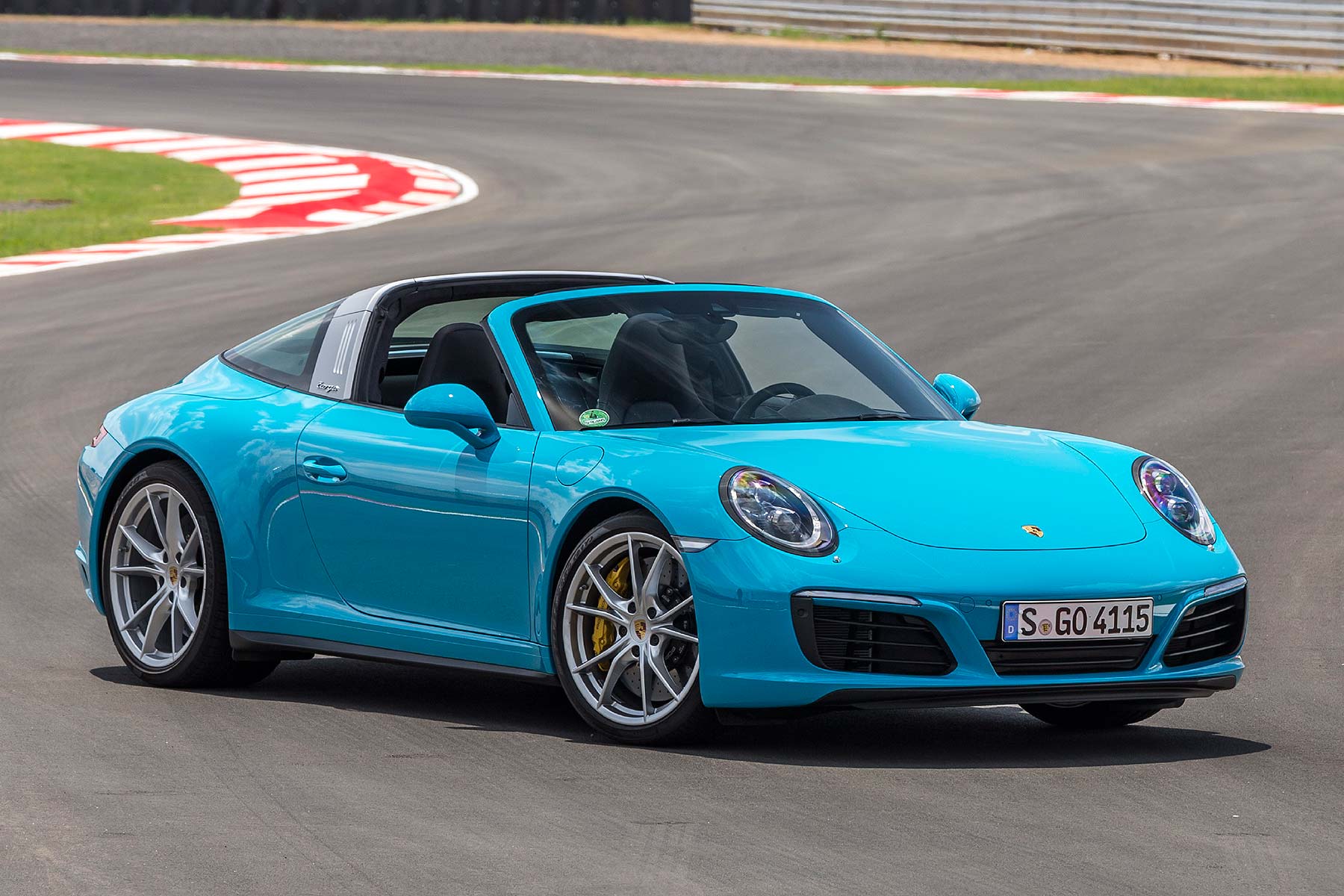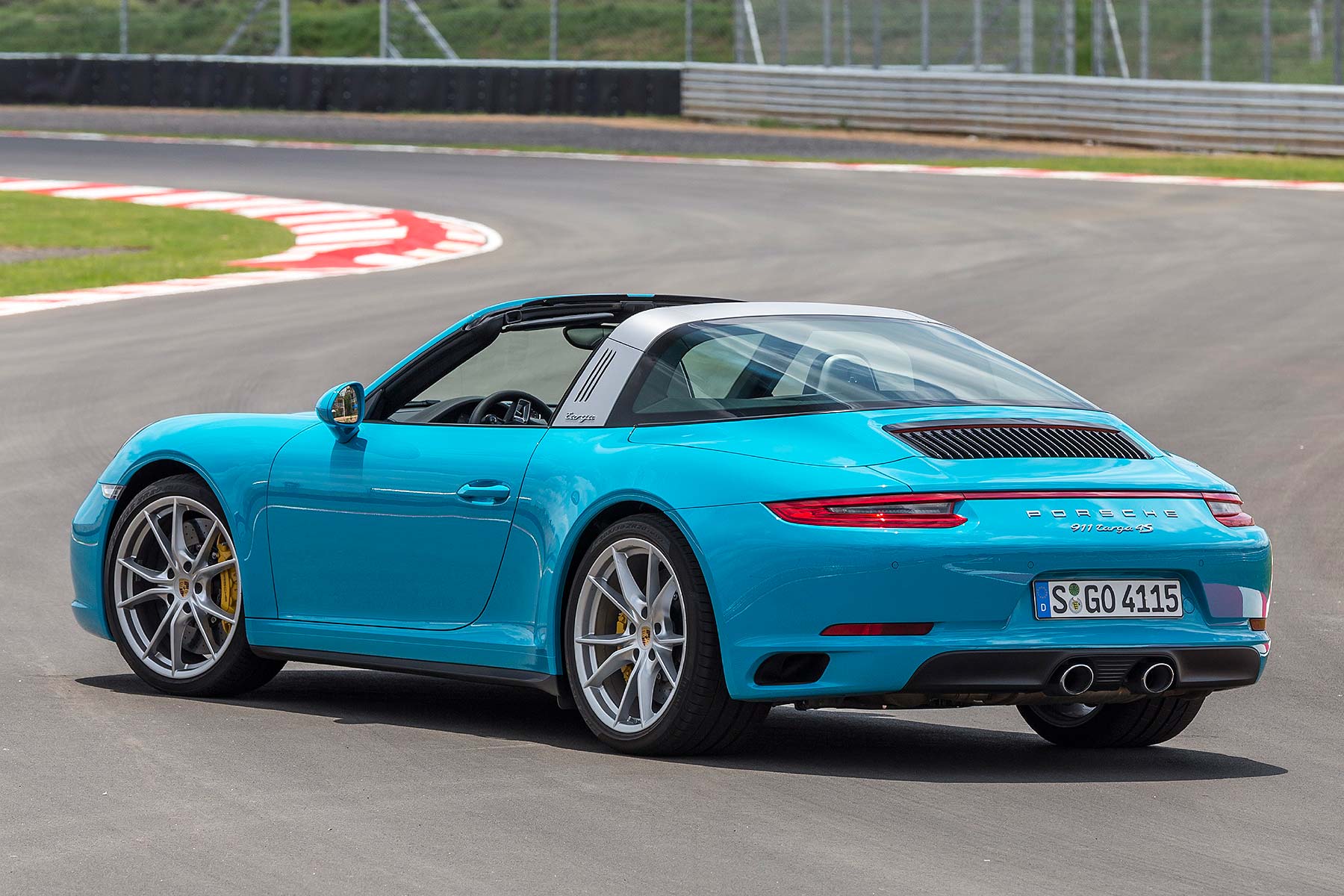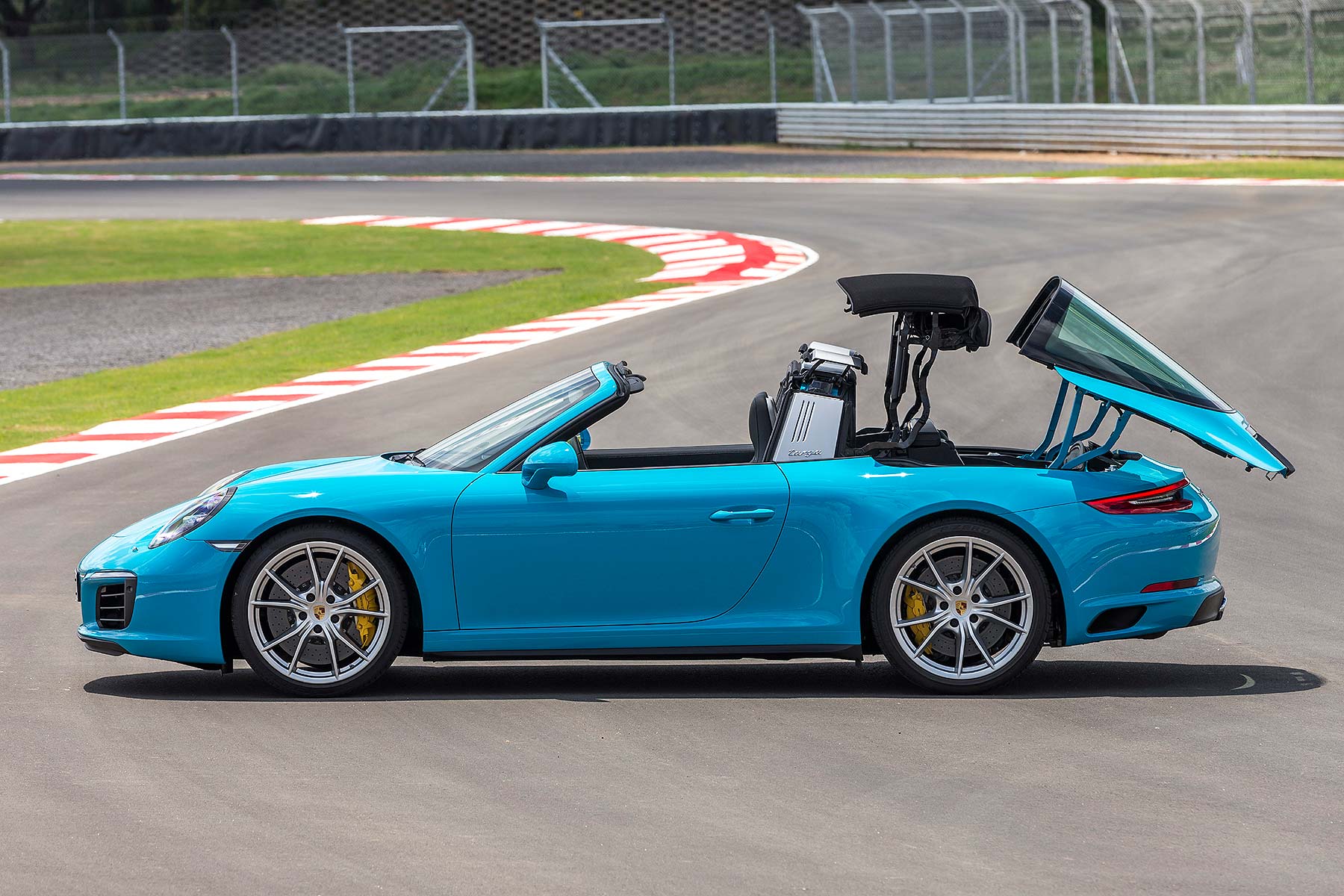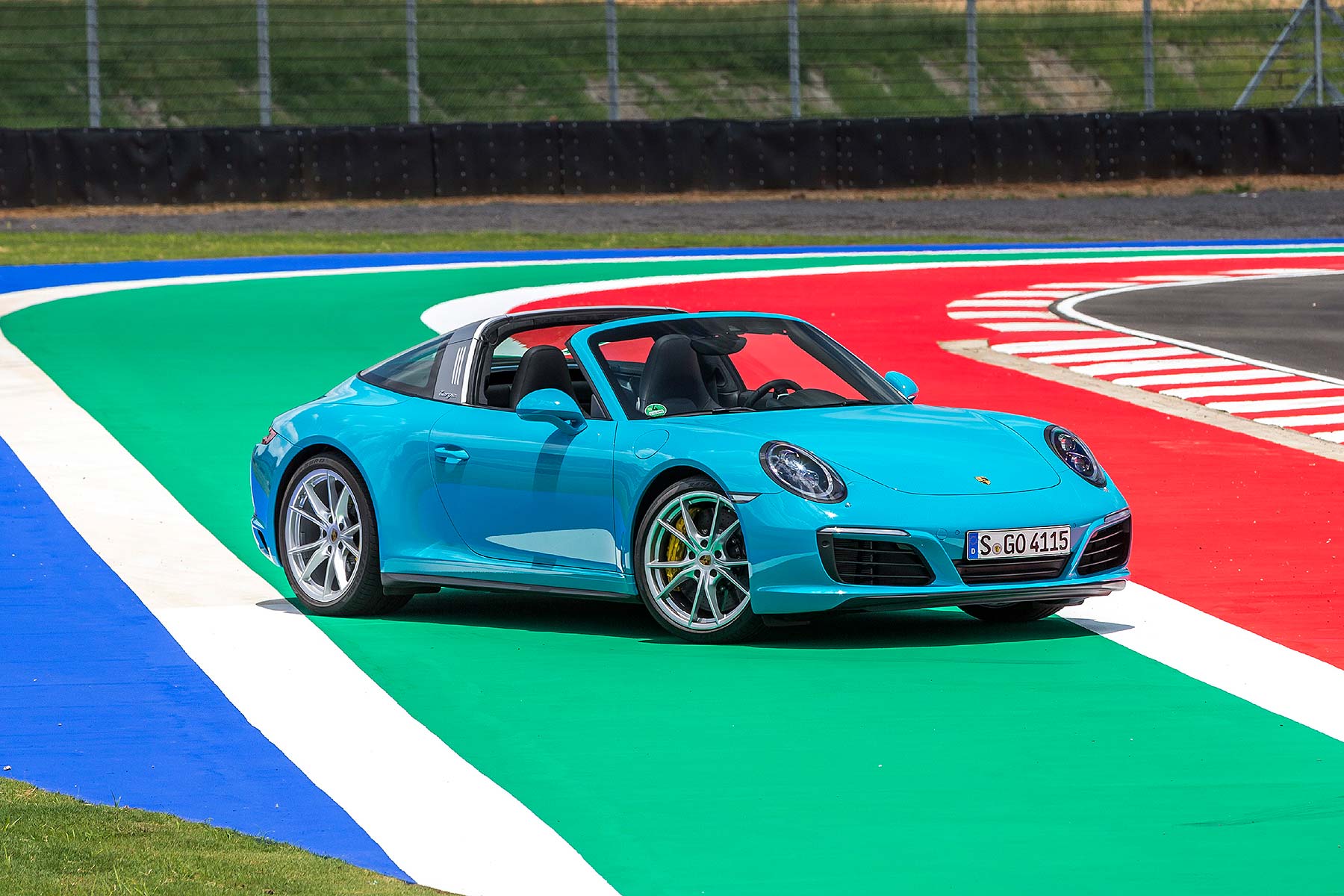 Poor Porsche 911 Targa. By rights, with its fancy street-theatre folding roof and huge glassy rear section, it should be among the coolest of 911s. But when even Porsche grudgingly concedes ‘it’s the heaviest 911 of all’, you know it’s perhaps not the engineer’s favourite.
Poor Porsche 911 Targa. By rights, with its fancy street-theatre folding roof and huge glassy rear section, it should be among the coolest of 911s. But when even Porsche grudgingly concedes ‘it’s the heaviest 911 of all’, you know it’s perhaps not the engineer’s favourite.
For 2016, they reckon they’ve fixed it. Given it the sharpness and vivacity its extra mass previously dulled. Honed the concept they brought back from the 1960s back in 2014.
Read more:
- 2014 Porsche 911 Targa review: first drive
They’ve done this by installing the 3.0-litre bi-turbo engine seen in the latest Porsche 911 Carrera, and using two years’ new Targa experience to tweak and hone the chassis for a bit of extra sporting focus. Straightforward but quite significant changes.
Offered in 370hp Targa 4 and the 420hp Targa 4S guise tested here, all new Targa have adaptive PASM suspension with a 10mm ride height drop. There’s an even lower sport option for the Targa 4S, and bigger brakes for both helps shed the extra speed more confidently.
The styling tweaks from the rest of the Carrera range – new headlights and tail lamps, doorhandles and louvred rear lid – are present, but otherwise it’s visually little changed from the 2014 new Targa.
Well, apart from the new Miami blue colour option pictured here, which is pretty amazing, and seems to enhance the retro-modern looks nicely. What about the rest of it though?
On the road

Rest assured, it still sounds like a real 911. It’s cammy and offbeat when you start it up, vocal and prominent even when you’re crawling around town. The turbos have softened it but they haven’t cloaked it.
OK, it’s still the heaviest Carrera-series 911. The Targa 4S weighs 1,600kg in PDK guise; a Carrera 4S weighs 1,510kg and a manual Carrera 4 is sub-1,500kg. Goodness, the Targa is even 20kg heavier than the Cabriolet.
But 368lb ft of torque on offer from just 1,700rpm now better conceals it. That’s a diesel-like low-rev pull: remember, the old Targa 4S only produced 324lb ft, and then not until all the way round at 5,600rpm. The new Targa 4S’s peak torque is flat between 1,700-5,000rpm; a plateau, not a peak.
This has a big effect on how the Targa drives. It ‘feels’ lighter and more energetic, less leaden and slightly dulled. Many Targa owners may not naturally want to drive flat out but, in the old car, you had to rev it hard to get the supercar performance. Not anymore.
The Targa 4S now feels more like a supercar all the time and should thrill owners with its acceleration and vibrancy, all backed up by assured all-wheel drive traction (better for 2016 now Carrera models have adopted some of the Turbo’s fancier, faster-acting system tech).
It still drives nicely too, albeit still affected more by the extra weight and higher centre of gravity than the regular Cabrio. It’s admirably stiff with the roof up – and the lack of rattle-flex from the roof is a solid achievement – but you can still sense it’s not as pure as a coupe as soon as you press on.
Have the roof down and things are even less thoroughbred than experts hope of a 911. Most Targa buyers probably won’t notice this, for it’s still a pleasing drive, with much-improved EPAS steering feel and the flow-along feel of all 911, but enthusiasts will grumble and snipe about it when they start pushing it.
It’s better than it was, but still not quite as good as the other 911s. At least all that extra torque makes it more pleasant and likeable in the default cruiser-drive most owners will likely default to.
On the inside

Targa means a lovely bright interior thanks to that enormous wraparound glass rear screen; it’s certainly airier than the darker, gloomier Cabriolet; if you live somewhere where the sun doesn’t shine all the time, this is the better sun-seeker of the two.
The rear deck lifts up and the soft-top bit above the occupants’ heads Z-folds down beneath the rear screen to open up the Targa. It means sunshine without the bluster of the Cabrio, which again some prefer. Do it via remote control for street theatre.
The 2016 Targa interior feels that bit more solid than earlier models, as if Porsche has ironed out any weak points, although the firm isn’t admitting to any big changes here. For an open-top car, it’s impressively shimmer-free and taut.
The new PCM4 infotainment system is impressive. With a flush-fit glass screen, it’s Apple-like in design and functionality is sleek. Apple CarPlay is a standout attraction but more useful day-to-day will be Porsche’s smartphone apps and online sat nav mapping with real-time traffic information.
The Targa is a practical Cabrio. Lift the rear screen up to reveal an extra stowage deck behind the rear seats (yes, it’s a four-seater) and the added usability of the sleeker infotainment system is a welcome contrast to the old multi-menu setup.
Running costs
Economy has leapt up, particularly in the PDK auto that most people choose. That now averages 35.3mpg and emits 184g/km CO2, an improvement of more than 4mpg. (The manual averages 31.3mpg and emits 208g/km CO2. Go PDK.)
The new engine promises lower servicing and maintenance costs as well, and will also be fully in line with future emissions legislation. Some supercars may be frowned upon for profligacy, but not this one.
The only fly in the ointment is price. The Targa 4S is not a cheap car: £100,000 is the base price, and that’s before you add on PDK plus all the other options you really ought to have in a Porsche.
Yes, PCM4 infotainment and PASM suspension are standard, but you even have to pay extra to get the ‘optimum’ o-62mph time: don’t choose the Sport Plus pack and it’s 4.0 seconds instead of 3.8.
Verdict

The 2016 Porsche 911 Targa 4S has been much improved by the addition of a turbo engine. It’s easier to drive and demands less of the driver in everyday motoring – not the sort of qualifications that should be top of a supercar buyers’ list, but somehow fitting here.
It’s generally better than it was, if still not as good as a 911 coupe. It won’t replace a hard-top 911, but is an interesting alternative to a Cabrio, something Porsche’s tactfully realised by pitching both at exactly the same price.
We’d still have a 911 coupe, of course, but at least the most sub-optimal 991 911 is now rather less sub-prime than it was.
2016 Porsche 911 Targa 4S: specifications
Engine: 3.0-litre straight-six bi-turbo
Price: £99,684 (PDK: £102,070)
Power: 420hp
Torque: 368lb-ft
0-62mph: 4.4secs (PDK with Sport Plus: 4.0secs)
Top speed: 188mph (PDK: 187ph)
Fuel economy: 31.4mpg (PDK: 35.3mpg)
CO2 emissions: 208g/km (PDK: 184g/km)